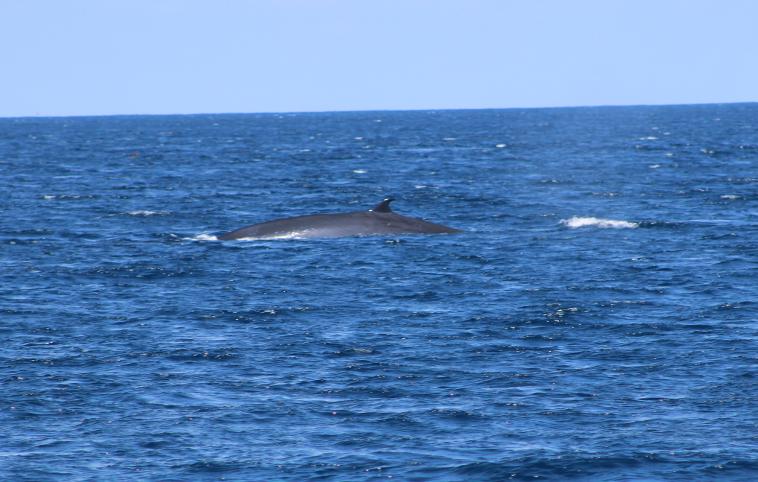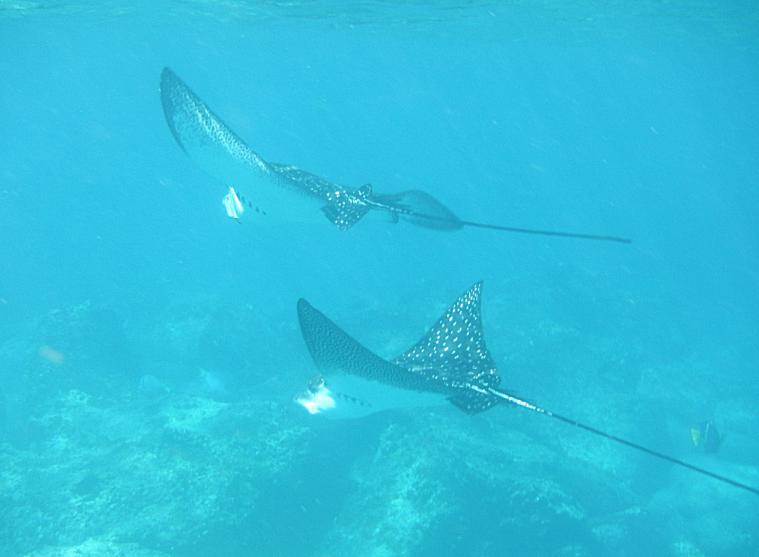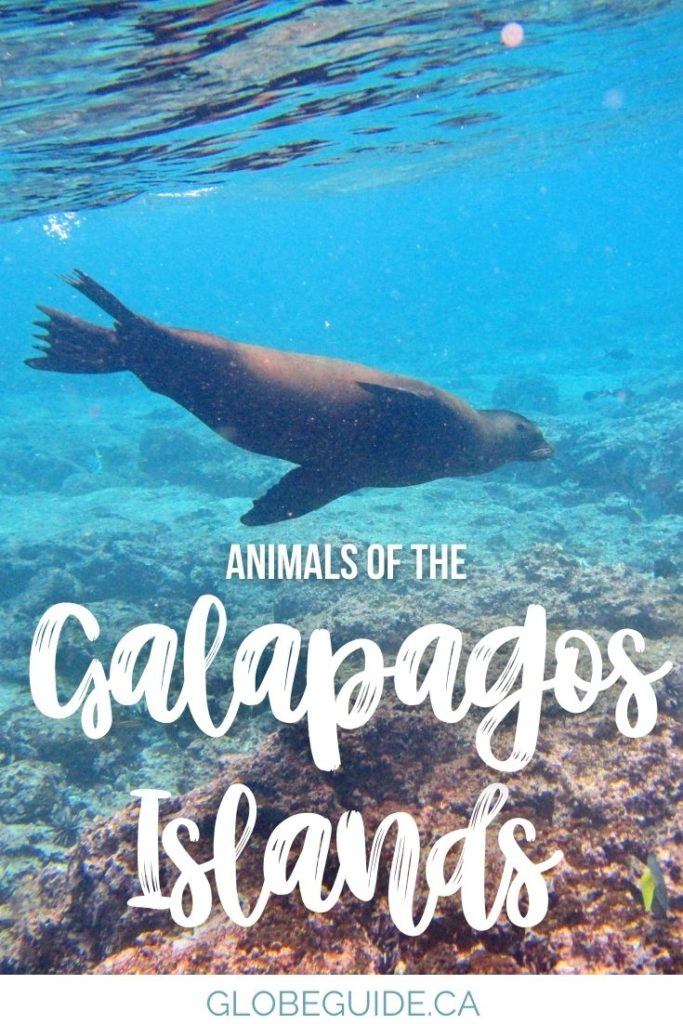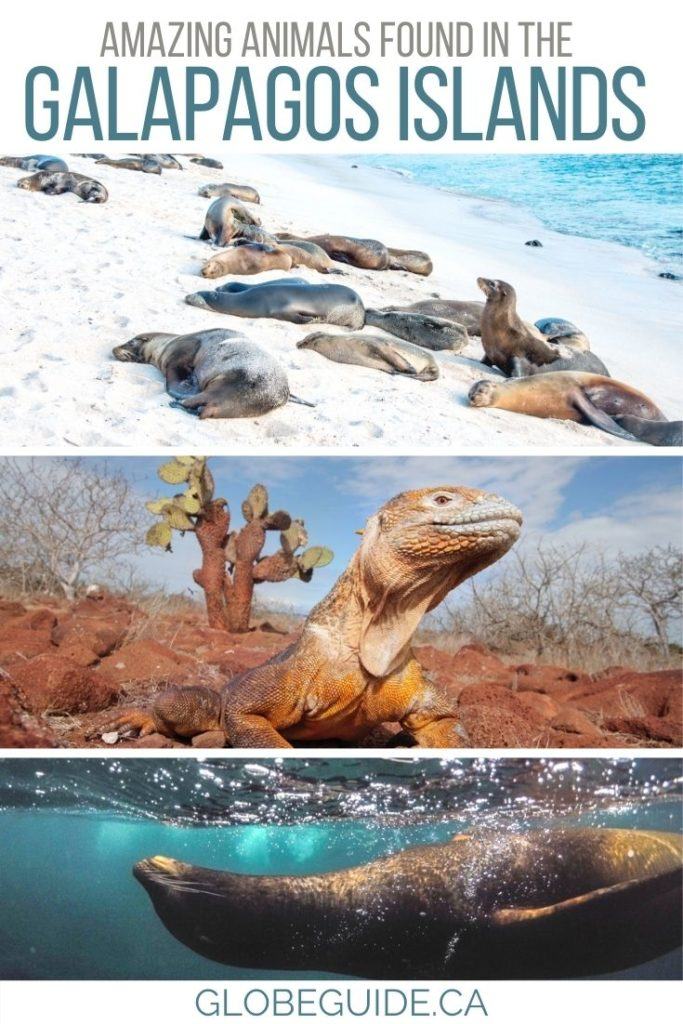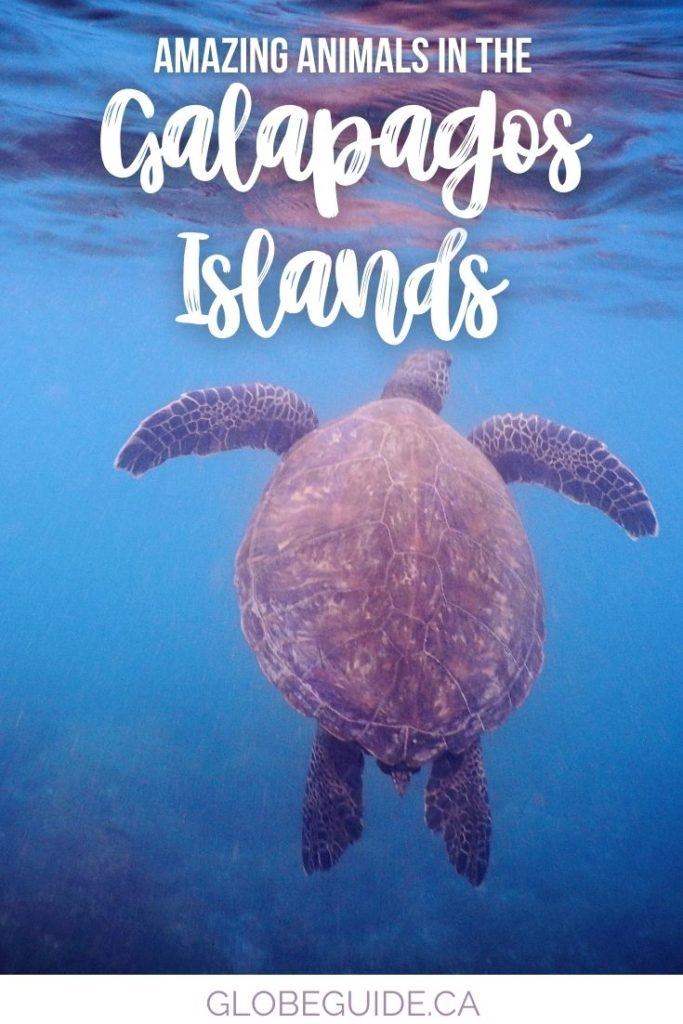There are few places on earth that compare to the Galapagos Islands when it comes to the sheer amount of wildlife roaming around in completely untouched habitats. The chain of islands found off the west coast of Ecuador are a nature lovers paradise, boasting dozens of species endemic to the Galapagos in the air, on land and underwater.
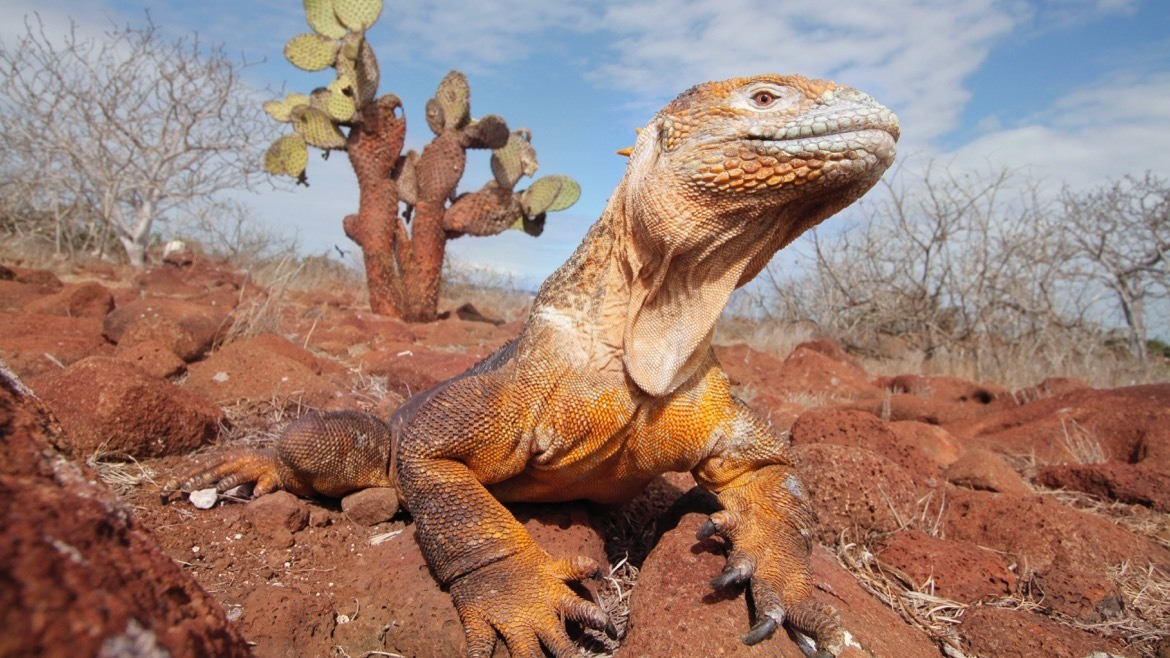
Where else could you possibly watch a blue-footed booby perform a mating dance, lay among sea lions, swim with a shark then snap a shot of a penguin perched on a rock, all in a single day? Here’s a look at some of the most popular animals in the Galapagos Islands.
Wildlife of the Galapagos Islands: Birds
The Galapagos Penguin
The Galapagos Penguin is the only penguin found north of the equator, and are typically found on Fernandina, Isabela, Bartolome and Floreana islands. Weighing an average of less than six pounds, these cute critters are usually spotted hiding out in caves and crevices to get out of the hot sun.
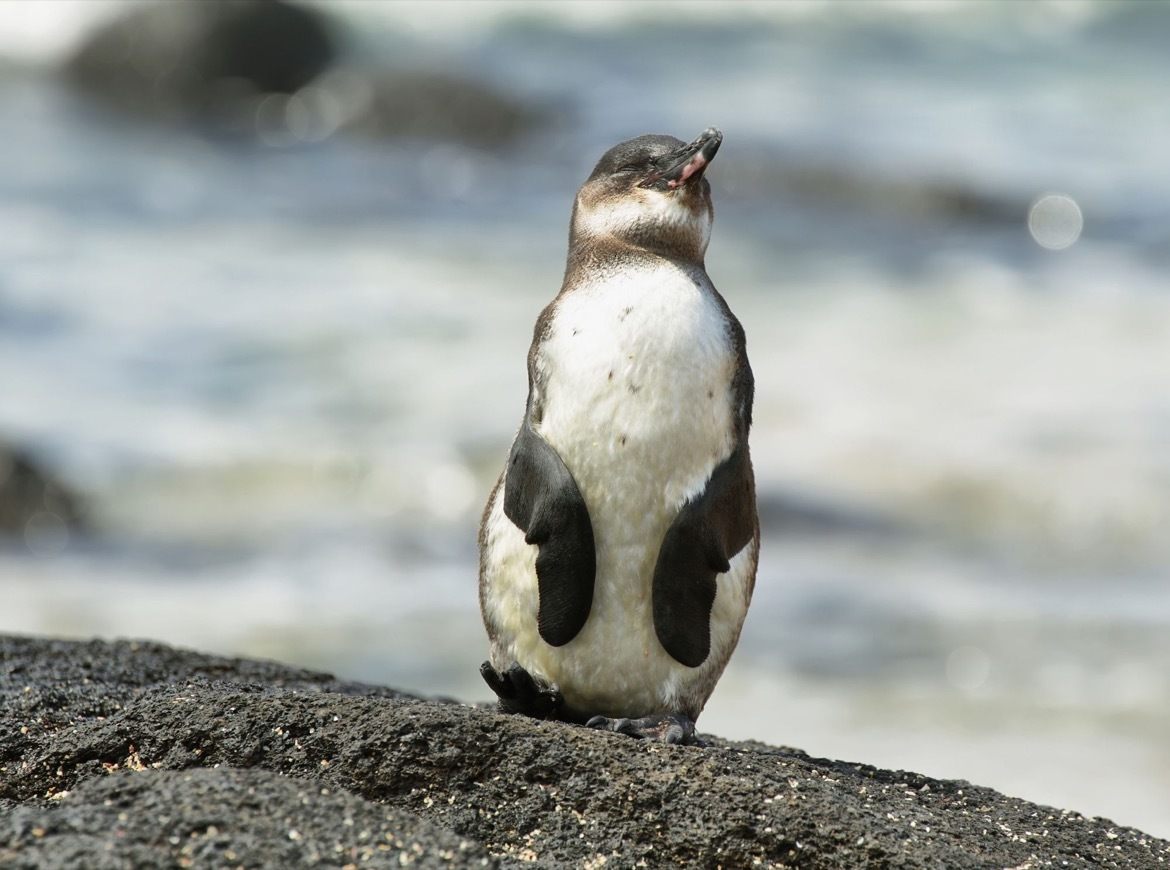
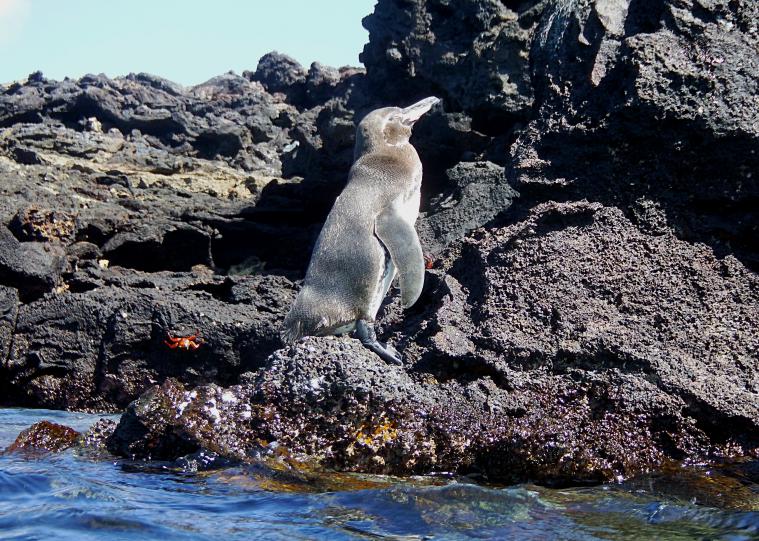
Blue-footed booby
One of the most entertaining animals in the Galapagos Islands, the aptly-named blue-footed booby is known for its fancy footwork during mating rituals. The female birds are said to be attracted to males with more vibrantly-coloured feet, and the mating ritual involves the male presenting the female with a small stick or stone, then tipping back toward the sky, whistling, and marching around to show off his feet.
If the match is successful the pair will often remain together for life, and they’re among the three booby species living in the islands.
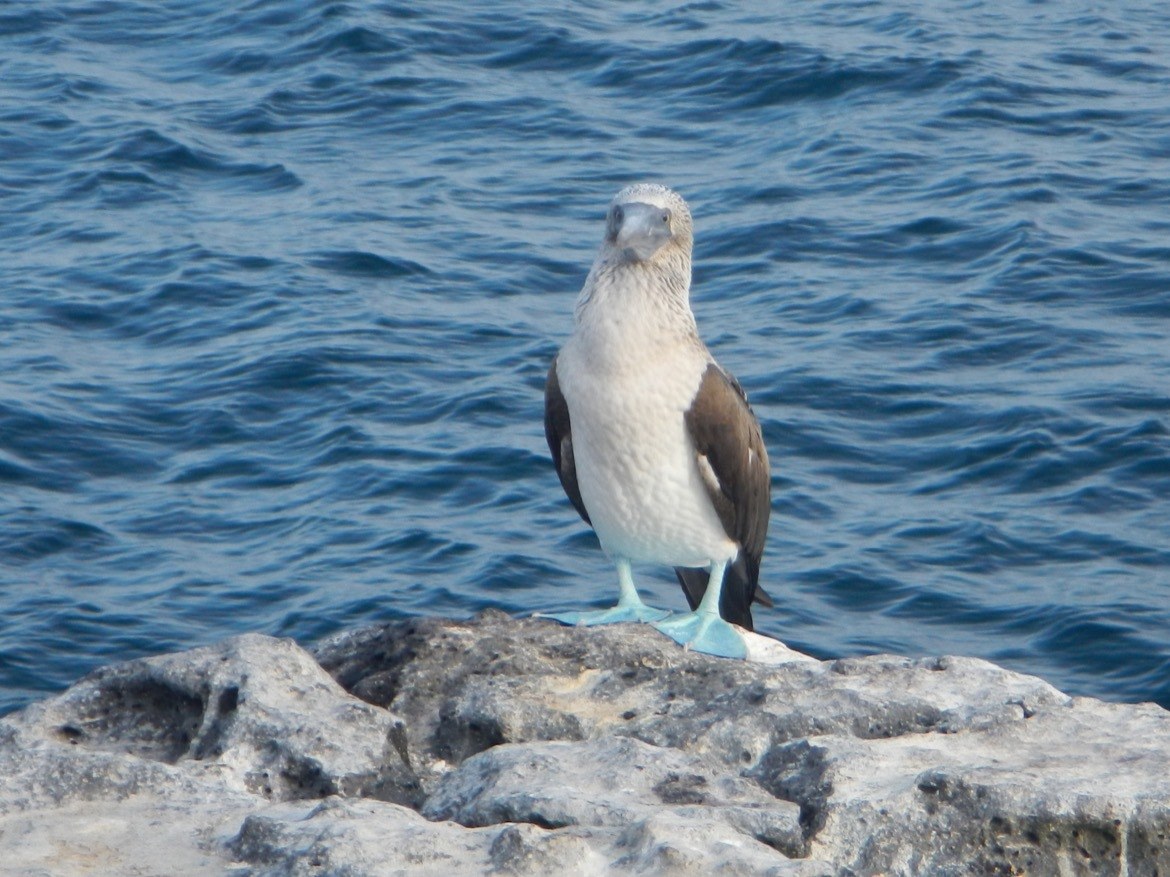
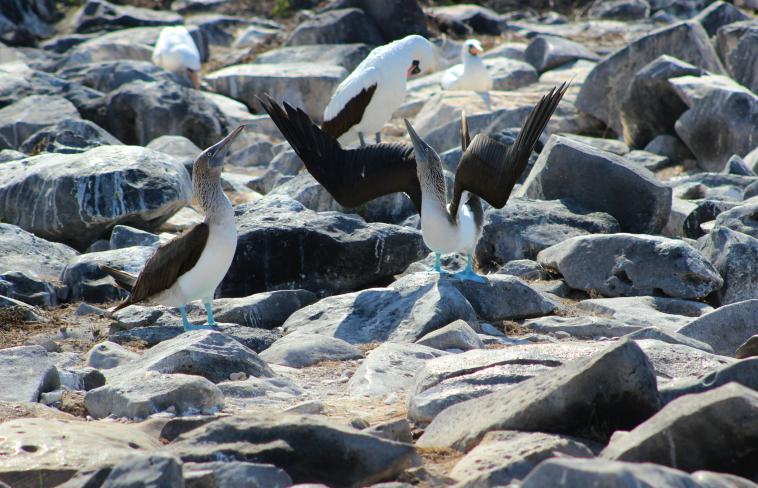
WATCH: Two males try to woo a female in the Galapagos Islands with their mating dance.
Red-footed booby
The red-footed booby has scarlet-coloured feet and a beautiful blue beak, and are the smallest of all booby species. Their name comes from the Spanish word ‘bobo’ which means ‘foolish’ or ‘clown’ and refers to their awkward movements on land. They are strong flyers, and are usually found in large breeding colonies between January and September.
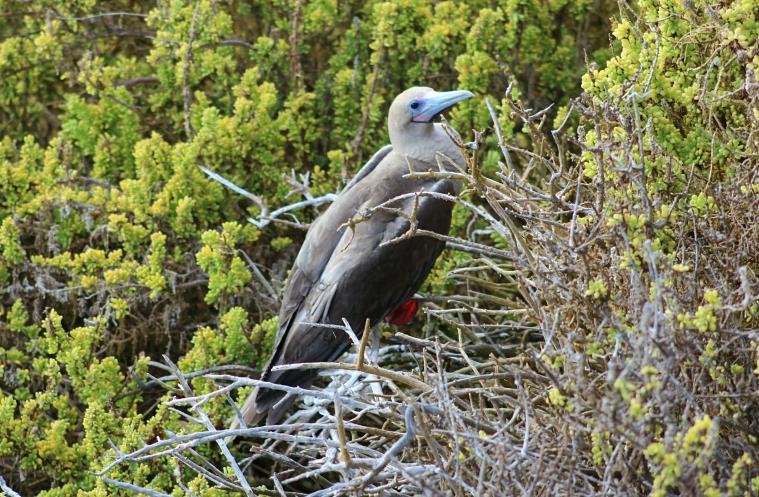
Nazca booby
Their grey feet aren’t as colourful as the other species of boobies, and Nazca boobys they make up for it in size being the largest of among the three species.
Nazcas are unique in that during breeding season, the female often lays two eggs instead of one due to an uncommon process called obligate siblicide, when one of the two siblings hatched grows larger and stronger than the other and the smaller one is killed and removed from the nest.
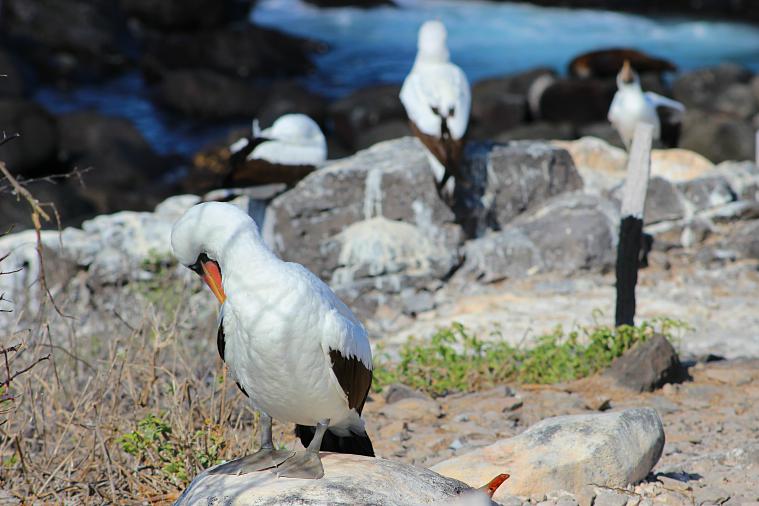
Magnificent Frigatebird
These beauties make quite the statement when they puff out their fire-engine red chests while courting during mating season. Nicknamed ‘the condor of the oceans’ by explorer Charles Darwin due to their incredibly large wingspan that allows them to fly for days at a time, they also have largest wingspan to body weight ratio of any bird in the world.
READ MORE: Finding Frigatebirds on North Seymour Island in the Galapagos
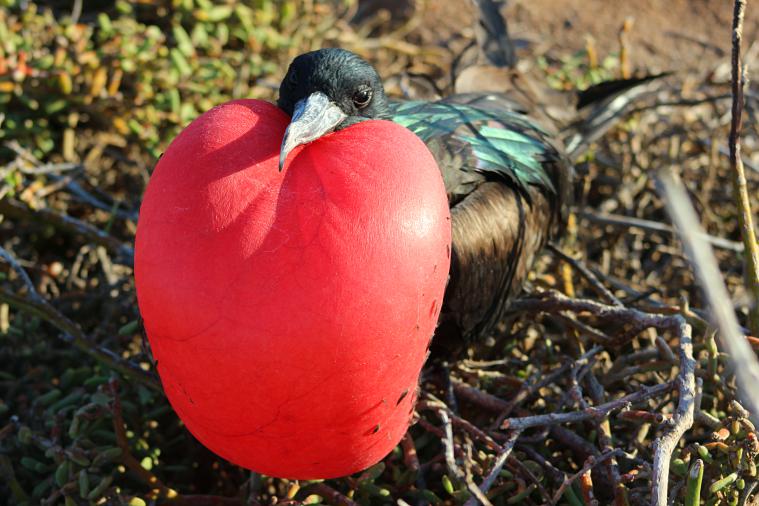
Short-eared owl
These avian predators may be tiny, but they’re deadly and feed off of lizards, rats and birds much larger than themselves, including boobies. They’re most active at night, yet sometimes seen during the day time on islands where there aren’t any Galapagos hawks to compete with.
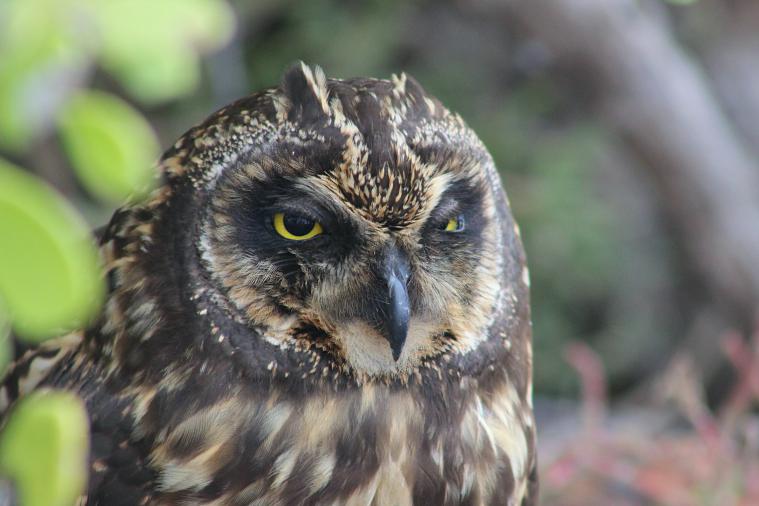
Galapagos Hawk
This apex predator stands guard over the Galapagos Islands, and is one of the world’s rarest raptors. Galapagos hawks feed off of giant centipedes and locusts, and occasionally snakes iguanas, turtle hatchlings and other birds.
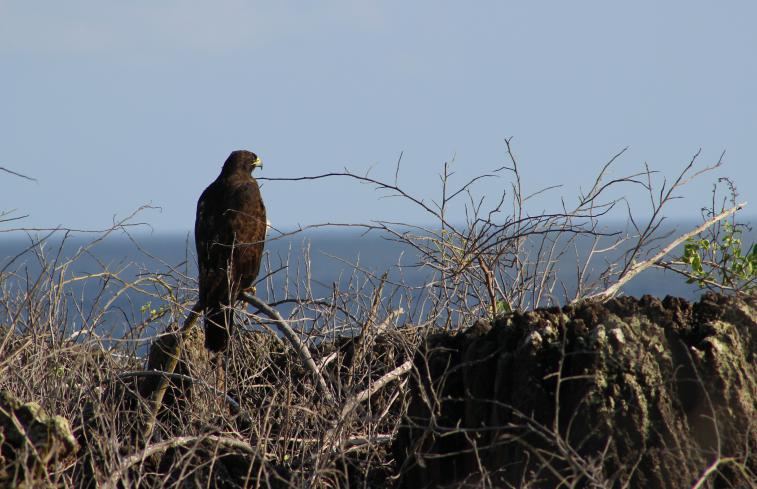
Flamingo
The pretty pink feathers of the American flamingo found in the Galapagos Islands stands out against the arid landscape here, who are only one of six species of flamingos in the world. It’s not easy to get close to the elusive birds who spend their time in the shallow waters of lagoons close to the shore, but you might spot them nesting on islands like Floreana, Isabela and Puerto Moreno between March and July.
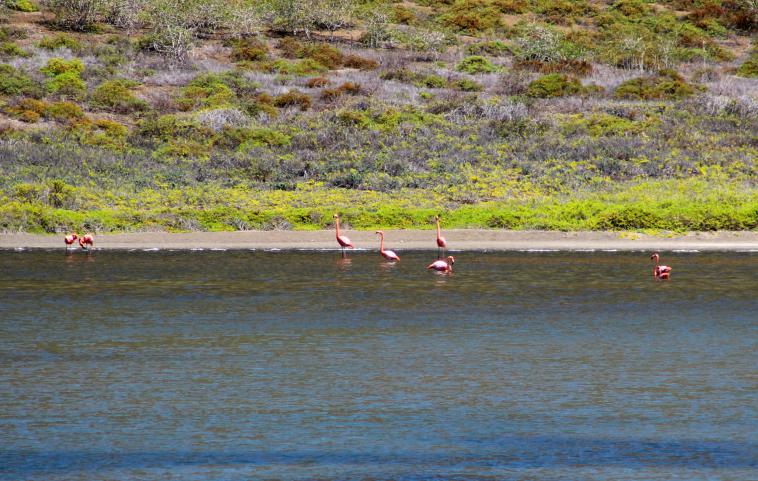
Animals of the Galapagos Islands: Mammals
Sea lions
The first time you see a Galapagos Sea Lion you’re sure to be charmed, only to quickly realize these playful guys are found pretty much everywhere! As the most common marine mammal in the archipelago, they’re often seen frolicking in the water close to shore, snoozing and soaking up the sun on beaches, barking at passing tourists passing on the pier or trying to play with snorkellers underwater.
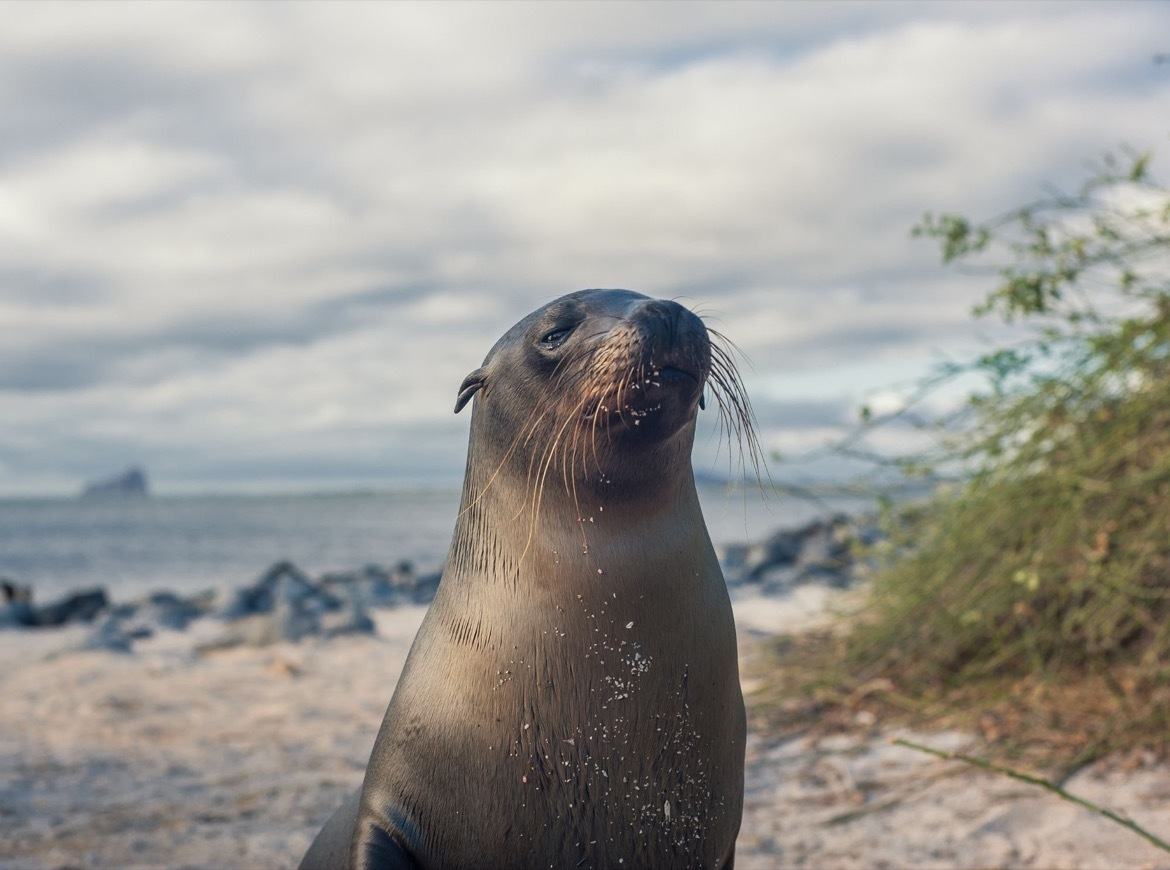
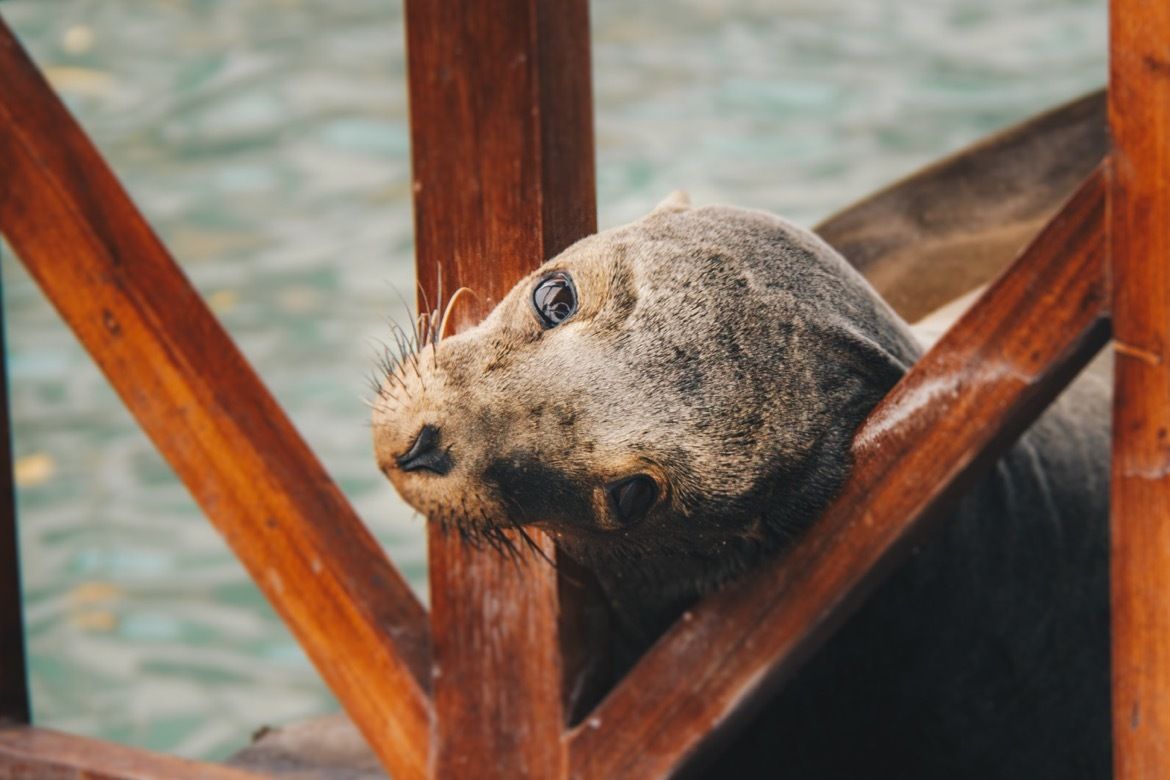
Dolphin
Three species of dolphins are often spotted in the Galapagos despite not being endemic to the islands: bottlenose, spinner and common dolphins. It’s most common to see bottlenose dolphins, since they swim in larger pods and like to check out boats.
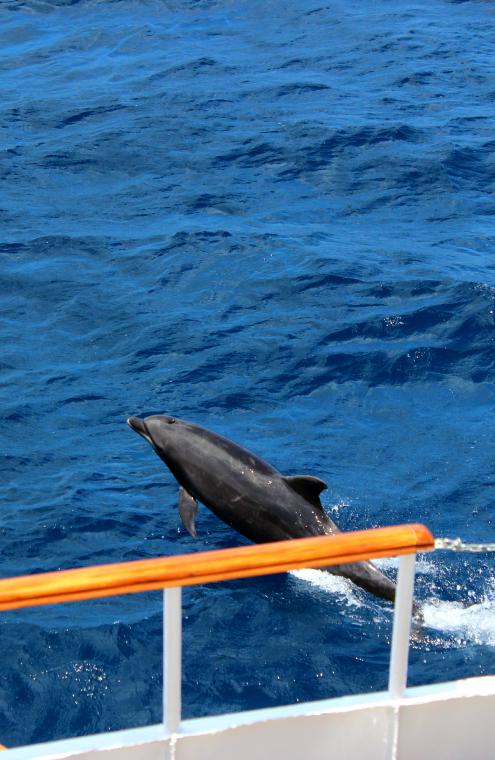
Whales
During the cooler months of July to October, you might spot one of the migratory whales like minkies, blue whales and humpbacks who are heading south to warmer waters. Other whales who sometimes travel through the islands are orcas, bryde and sperm whales.
Galapagos Island reptiles:
Galapagos Islands turtles
The Galapagos green turtle is the only species of sea turtle to nest in the Galapagos, and if you don’t spot them in the water chances are you’ll see evidence of them on the beach. That’s because females lay their eggs at night after crawling up the beach and digging a nest with their back flippers, then lay up to 200 eggs before heading back to the water before sunrise.
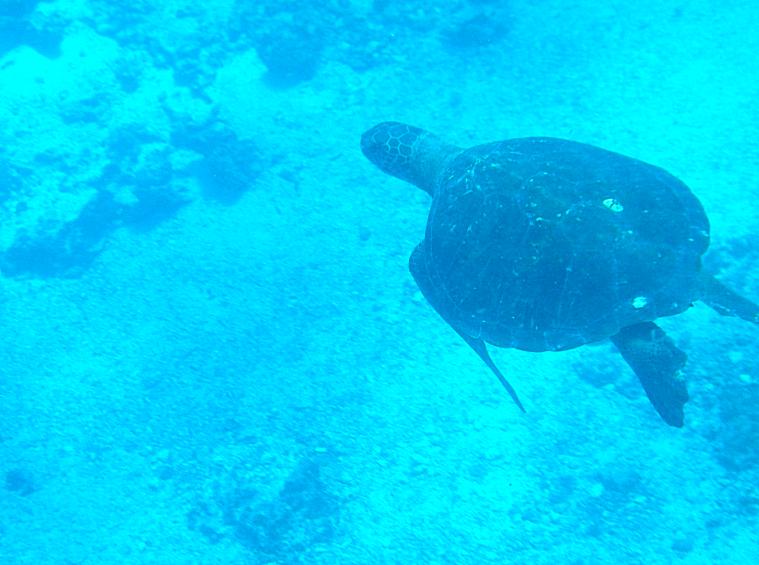
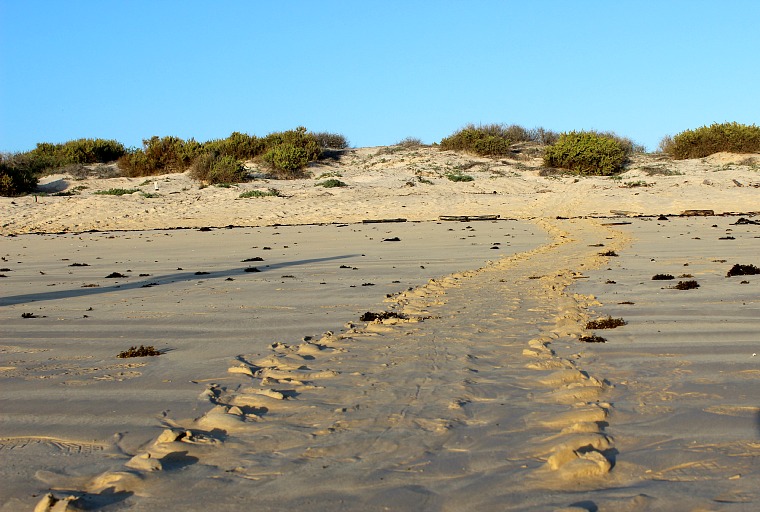
Galapagos Islands tortoise
These lumbering creatures are perhaps the most famous residents of the Galapagos Islands; in fact, Galapágo is a Spanish word for tortoise. It’s believed they arrived here from mainland South America two to three million years ago, and twelve species remain. You’ll have no problem getting a good photo, as they spend about 16 hours per day resting and can survive for up to a year without water or food.
The largest populations of Galapagos tortoises are found in the Santa Cruz highlands and on Isabela.
READ MORE: Tracking tortoises on Santa Cruz in the Galapagos Islands
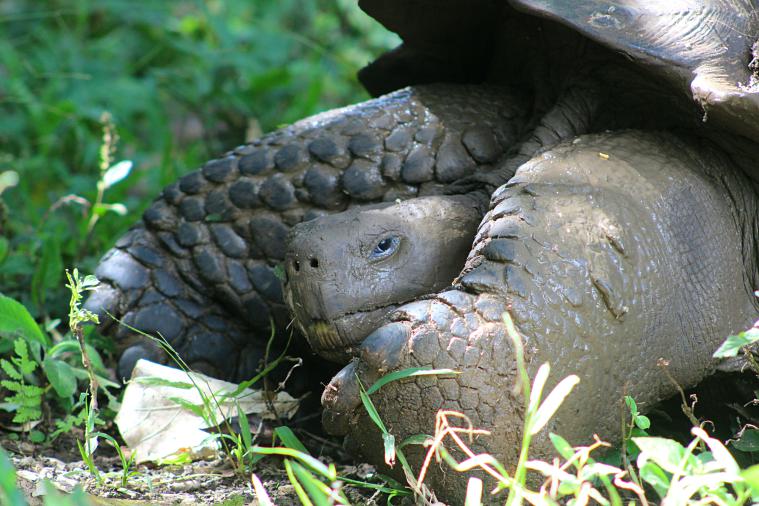
Iguanas
These colourful creatures are often found perched on sun-soaked rocks enjoying the heat, and there are a number of different types of Galapagos Islands iguanas including land iguanas, the red-and-green Christmas iguanas, and the Galapagos Islands marine iguana which is the world’s only sea-going lizard.
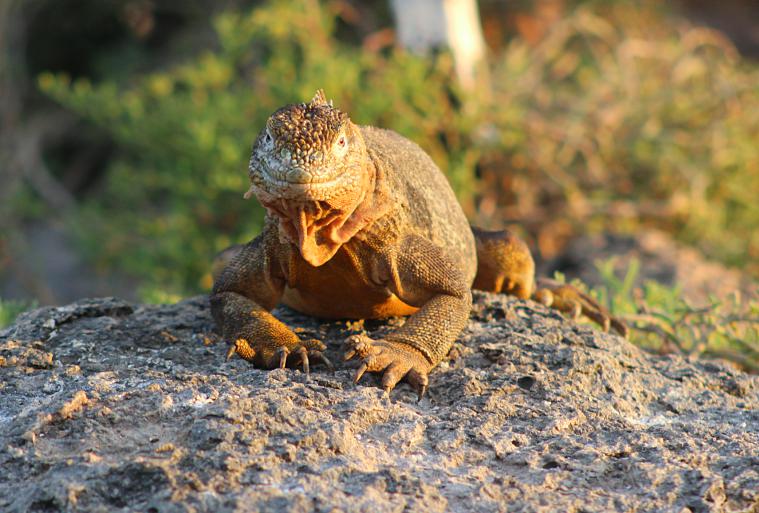
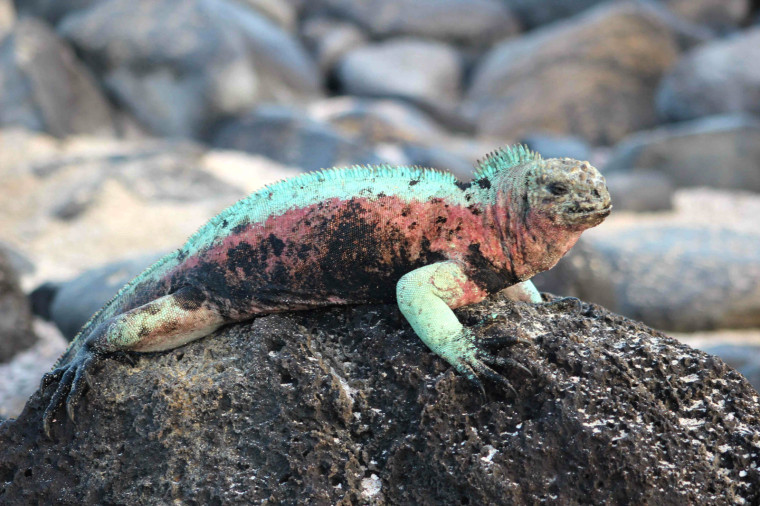
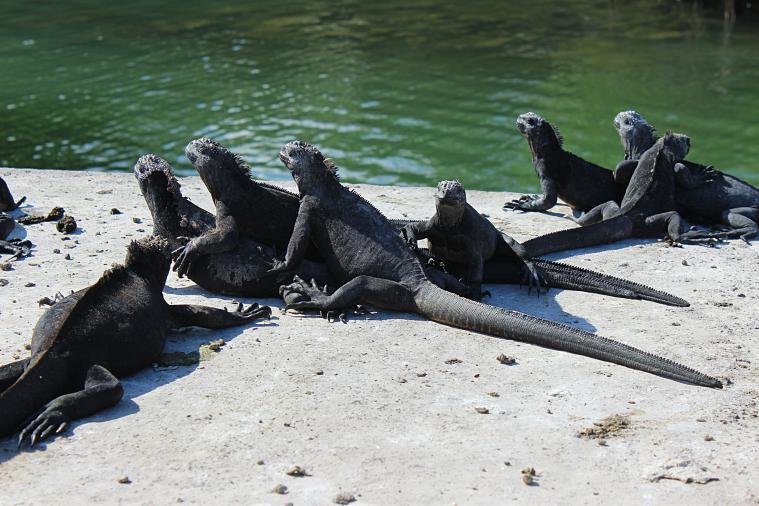
Fish in the Galapagos Islands
Sharks
There are a handful of different species of sharks in the Galapagos Islands, with one of the most common being scalloped hammerhead sharks which can sometimes be seen gathering in large schools of up to several hundred. Divers might also come across a Galapagos shark, while more common blacktip reef sharks and whitetip reef sharks prefer to stay closer to the surface.

Those who time their visit between June and November might get to see a majestic whale shark, which are usually seen near the islands of Darwin or Wolf.
RELATED: Swimming with whale sharks near Isla Holbox, Mexico
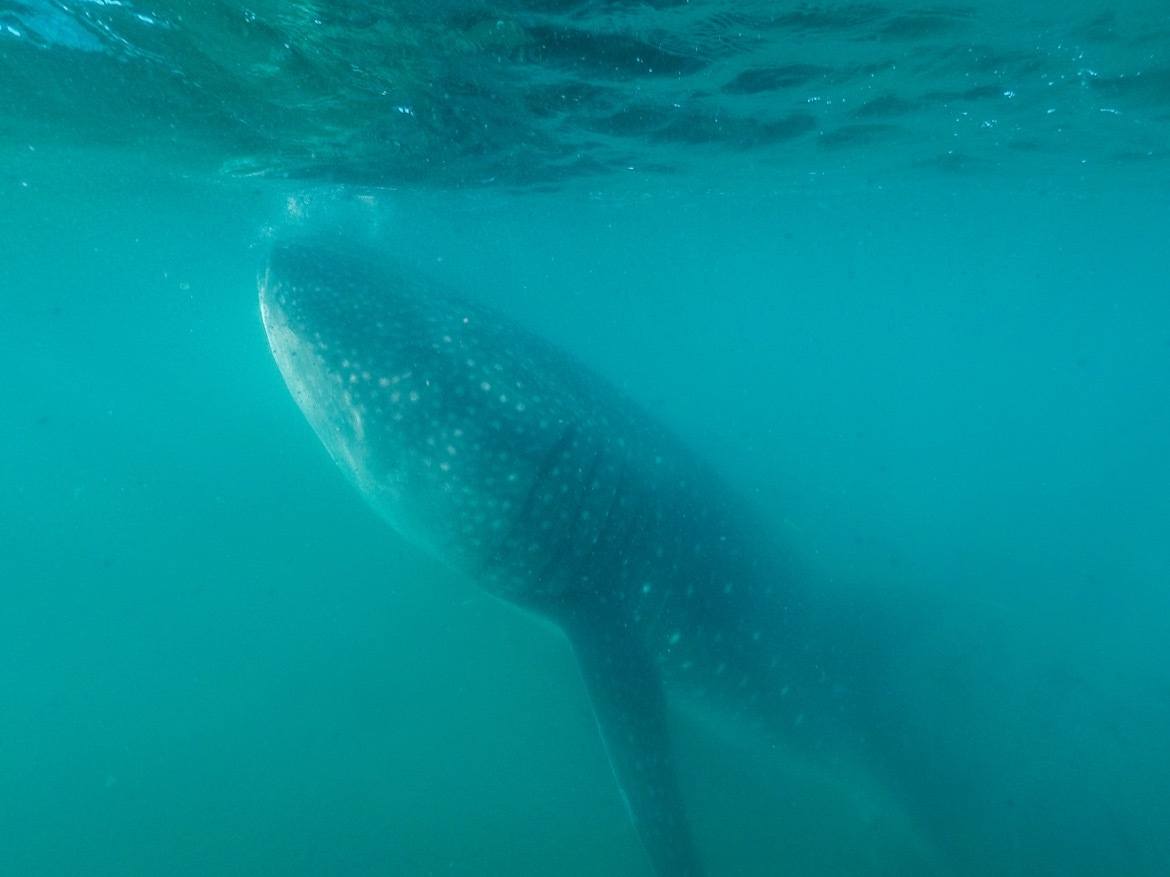
Rays
There are more than a dozen species of rays in the Galapagos Islands, including the spotted eagle ray, the manta ray and the golden ray. The best time to spot them is when the water is warm and the visibility is clearer from December to May.
YOU MIGHT ALSO ENJOY:
- Why Espanola island is the jewel of the Galapagos Islands
- Exploring the Galapagos: Floreana island and famous Post Office Bay
- A complete packing list for Galapagos Islands
- Highlights of San Cristobal island and Kicker Rock in the Galapagos
SHARE THE PINSPIRATION! CLICK THE IMAGES BELOW TO PIN:
This post may contain affiliate links, which Globe Guide receives compensation for at no additional cost to you.


